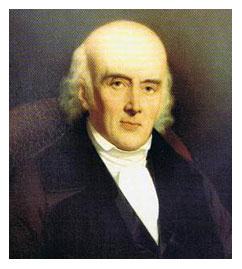|
ABOUT CSH
Administration
Affiliates
Background
Communications
Governance
MEMBERSHIP
Benefits of Membership
Let's Talk
Professional Insurance
Join Us!
ADVOCACY
Taking Action
Federal Regulations
Importing Policies
Provincial Regulations
PROFESSIONAL STANDARDS
Registration
Activation Form
Codes of Conduct
Accountability
Professional Development
Accreditation
 Continuing Education Events
Continuing Education Events
Online Continuing Education
PUBLIC AWARENESS & EDUCATION
April Awareness Month
 Public Education Events
Public Education Events
ABOUT HOMEOPATHY
What is Homeopathy?
Homeopathy Works
Patient Information
Extended Health Insurance
Research
In the News
Articles
FOR MEMBERS
Membership Renewal
Society Announcements

|
|
HOME >>ABOUT
HOMEOPATHY
Homeopathy is a natural system
of medicine that uses highly diluted doses of substances to stimulate
the body's own healing mechanism to promote health.
The use of homeopathic medicines – popularly known as remedies – is
based on the discovery that natural substances are capable of curing the
same symptoms that they can cause. By studying the symptoms that
develop when a healthy person tests or “proves” a remedy, homeopaths can
determine which symptoms the remedy is capable of curing. This is called
the Law of Similars or “like cures like.”
A simple example of this principle can be seen with the common onion.
Slicing an onion can cause symptoms of burning and watery eyes, as well
as sneezing and a runny nose. Many hayfever sufferers with symptoms of
burning, watery eyes, sneezing, and runny nose have found dramatic
relief after taking homeopathic Allium cepa (the remedy made from
red onion). Thus the substance that can cause symptoms can, as a remedy,
also cure them.
History of Homeopathy
References to the basic principles of homeopathy are found in ancient writings and
in the traditions of native medicines. These principles were re-discovered
over 200 years ago by German physician Samuel Hahnemann (1755-1843) who
developed them into the science that he called Homeopathy – from the
Greek words homoios (similar) and pathos (disease or
suffering). This new system of healing quickly spread throughout Europe
and beyond. Members of Britain’s Royal Family have used it since Queen
Victoria’s reign. By the late 1800s, homeopathy had become one of the
most popular healthcare systems in North America, valued by both doctors
and families using home remedy kits.
The popularity of homeopathy declined in the early 20th
century with the advent of pharmaceutical drugs and other modern
therapies. In recent decades, however, as many people have turned to
alternate forms of medicine to avoid side-effects from conventional
treatment, the use of homeopathy has exploded throughout most parts of
the world. It is now an accepted form of medicine in many European and
Latin American countries, the UK, and India.
In North America, the most common approach to prescribing homeopathy is
known as Classical homeopathy, which is based on the selection of a
single remedy that most closely matches your symptoms at a particular
time and then waiting to observe your response before administering
another remedy. This method focuses on the underlying disturbance or
dis-ease that causes the symptoms, rather than on the symptoms
themselves. Classical homeopathic treatment is sometimes referred to
as Hahnemannian or constitutional prescribing.
Additional information is available about the homeopathic
consultation, fees, and insurance.
|
|
FIND A HOMEOPATH

Homeopathy
was developed by
Samuel Hahnemann
(1755 - 1843).
MORE
HOMEOPATHY:
It Works for Me!
Learn more about homeopathy
Articles written
by CSH members:
READ MORE
CONTACT US
|